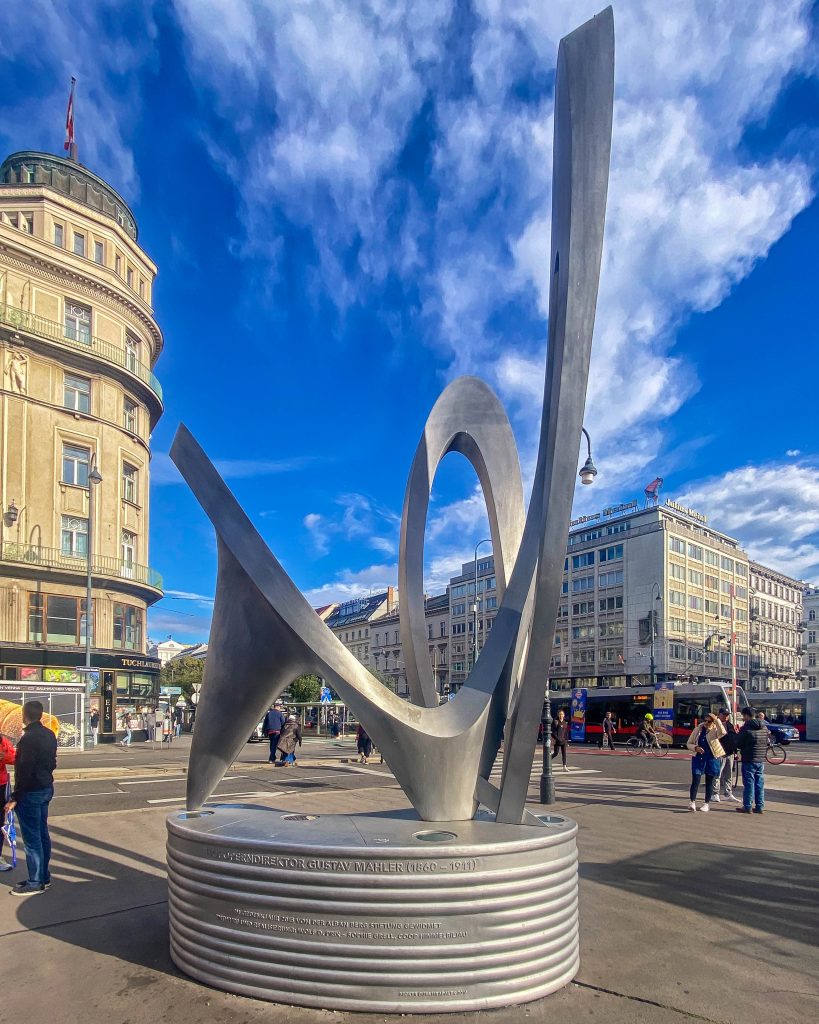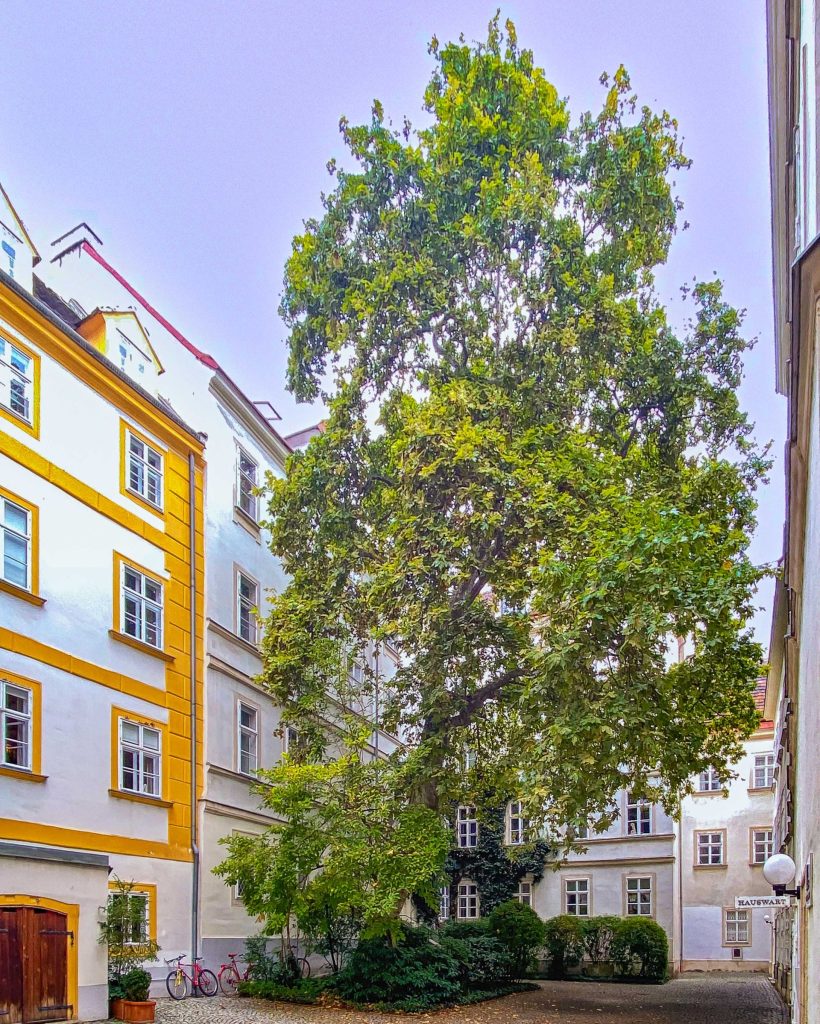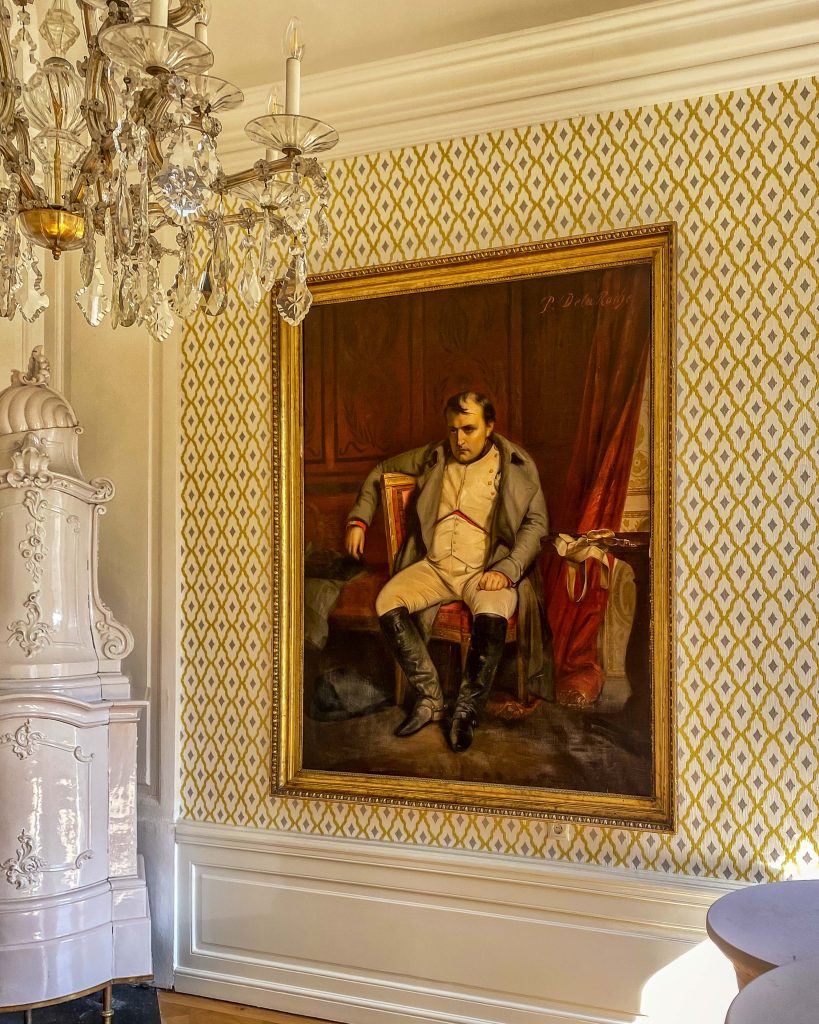Alban Berg Monument

The contemporary Alban Berg monument from 2016 in front of the Vienna State Opera is not just an ideal meeting point for visitors to Vienna. It commemorates both the composer of the Viennese atonal school, Alban Berg, and three fellow composers associated with his work: his teacher Arnold Schönberg, his friend Anton Webern and court opera director Gustav Mahler.
The exhibition designed by the renowned Arch. Wolf D. Prix of Coop Himmelb(l)au, the 5m high cast aluminum sculpture with 3 loops probably also reflects the expressive lines of the music, the 12-step pedestal refers to twelve-tone music.
Alban Berg is regarded as a major innovator of 20th century music, in particular his operas „Wozzeck“ and „Lulu“ are considered masterpieces and are regularly performed, as are orchestral pieces and the violin concerto.






